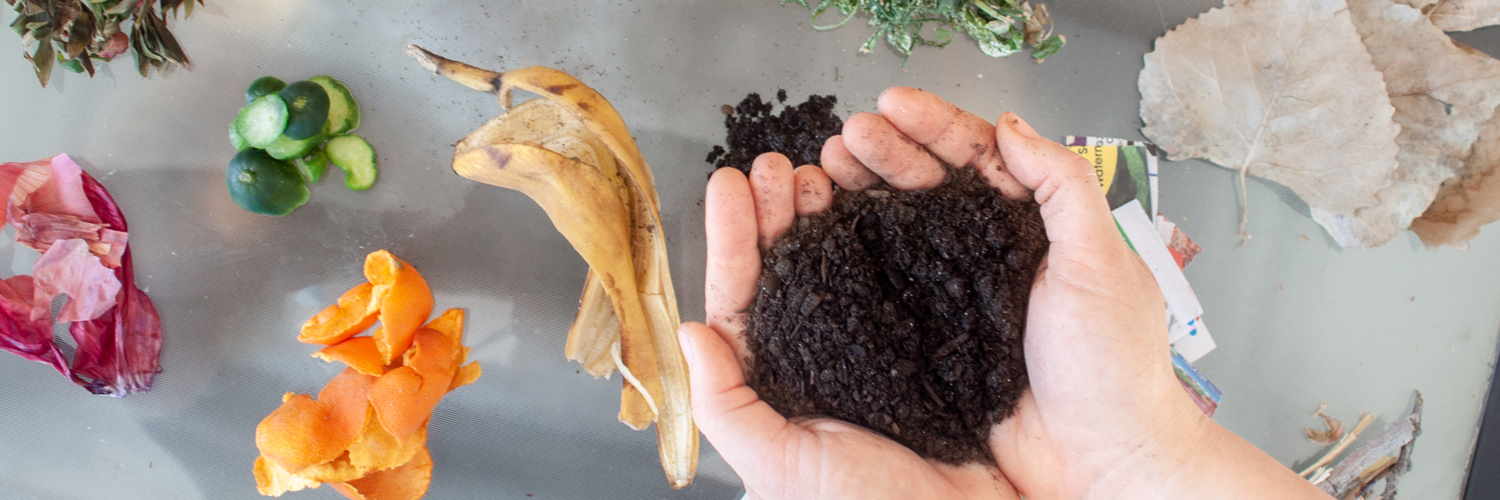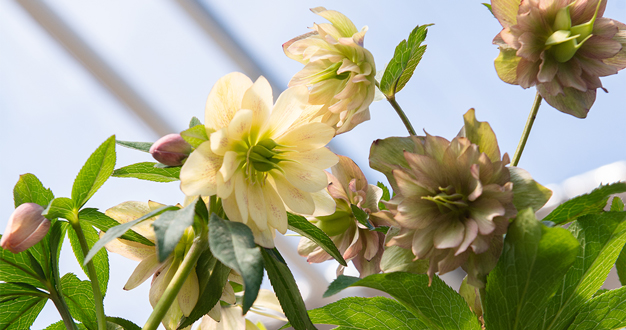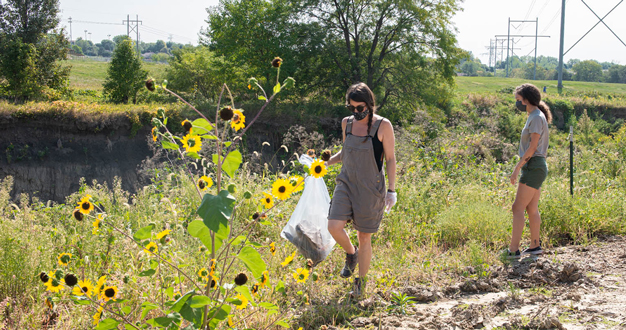
As gardeners, we know that incorporating compost into the soil has extremely positive effects on the health and productivity of our gardens and landscapes. But did you know that just the practice of producing the compost itself has a big postive impact on the health of our planet too? Here, we’ll discuss how composting is beneficial for our environment and share some of the basics of starting and maintaining your own supply of valuable compost. It’s a surprisingly easy project your garden and the whole planet will thank you for.
How Composting Helps the Earth
Compost is the dark, nutritious material that results when tiny microorganisms feed on bulky organic materials and break them down into nutrients that plants can take up from the soil. But for that decomposition process to work right, oxygen must be available to the microbes. When we toss food scraps, grass clippings, newspaper, and other organic materials into the trash, they travel to the landfill where they become trapped in an anaerobic – no-oxygen – environment. There, microbes continue to decompose the materials, but in an anaerobic environment, methane gas becomes a byproduct.
As one of the greenhouse gases, methane contributes to global warming by both absorbing energy and preventing heat from escaping into space. And methane is particularly good at that too. According to the EPA, methane is over 28 times better at absorbing and trapping heat energy in the atmosphere than carbon dioxide. Clearly, the more food scraps and other organic waste we keep out of the landfill, the better off our planet will be.
The Basics of Composting
Producing your own “black gold” – what some gardeners call compost – isn’t as complicated as it appears at first. We know oxygen is an important factor, but those hungry microbes also need the right balance of nitrogen, carbon, and water too. A basic compost pile provides all four of these important building blocks.
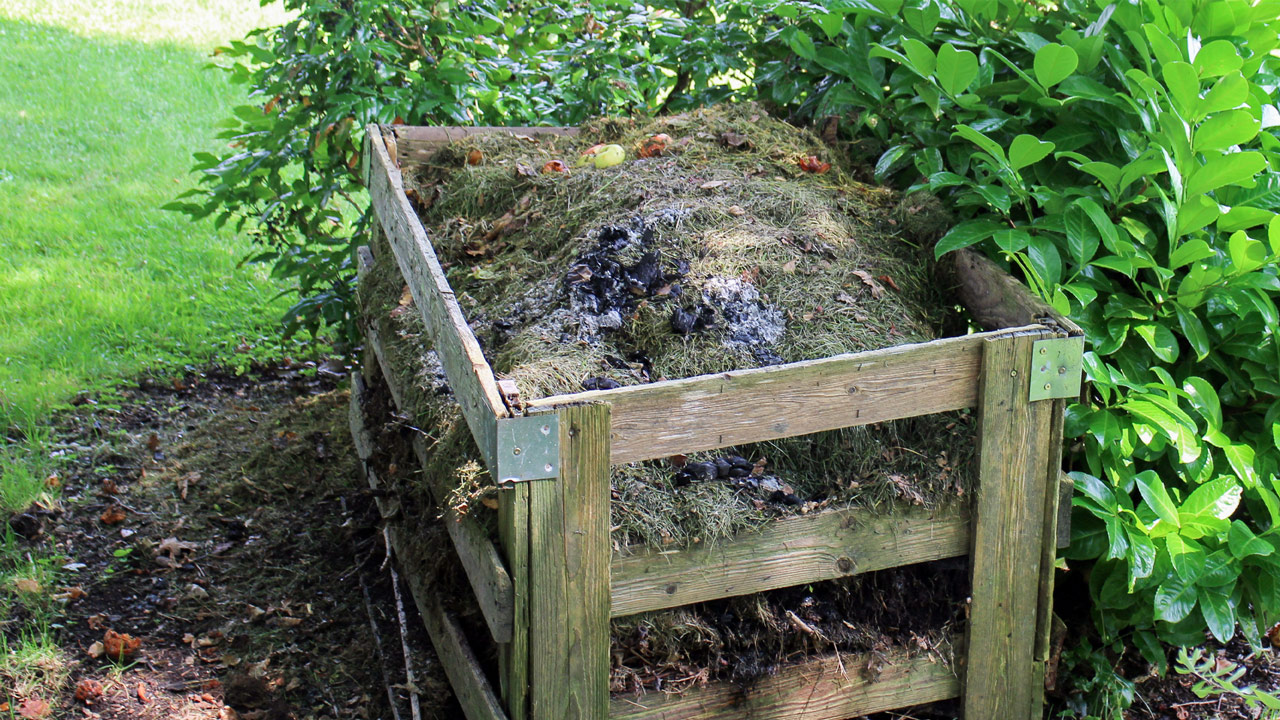
Oxygen
A good composting setup allows oxygen to interact with the organic material in the right amount. How you contain your compost pile affects how oxygen interacts with it, and people who compost use a variety of methods to create their bins. You can use chicken wire or welded wire fencing to create an upright, open-air cylinder. A suitable bin can also be created with cinder blocks or wooden pallets. Pre-made compost bins or barrels are good options too.
As for size, a 3’x3’x3’ dimension creates an ideal ratio of surface area to volume that allows air to reach the pile but also allows the pile to retain the heat that’s being produced during decomposition. Heat keeps decomposition running efficiently and kills off any plant pathogens that might be present. To help oxygen reach all the material in the pile, it’s a good idea to turn or mix the pile regularly – but not too much. When we mix, we disrupt the microbes in their work and dissipate heat, so turning the pile two or three times a month is a good goal. A 3’x3’x3’ container makes this task a lot easier too.
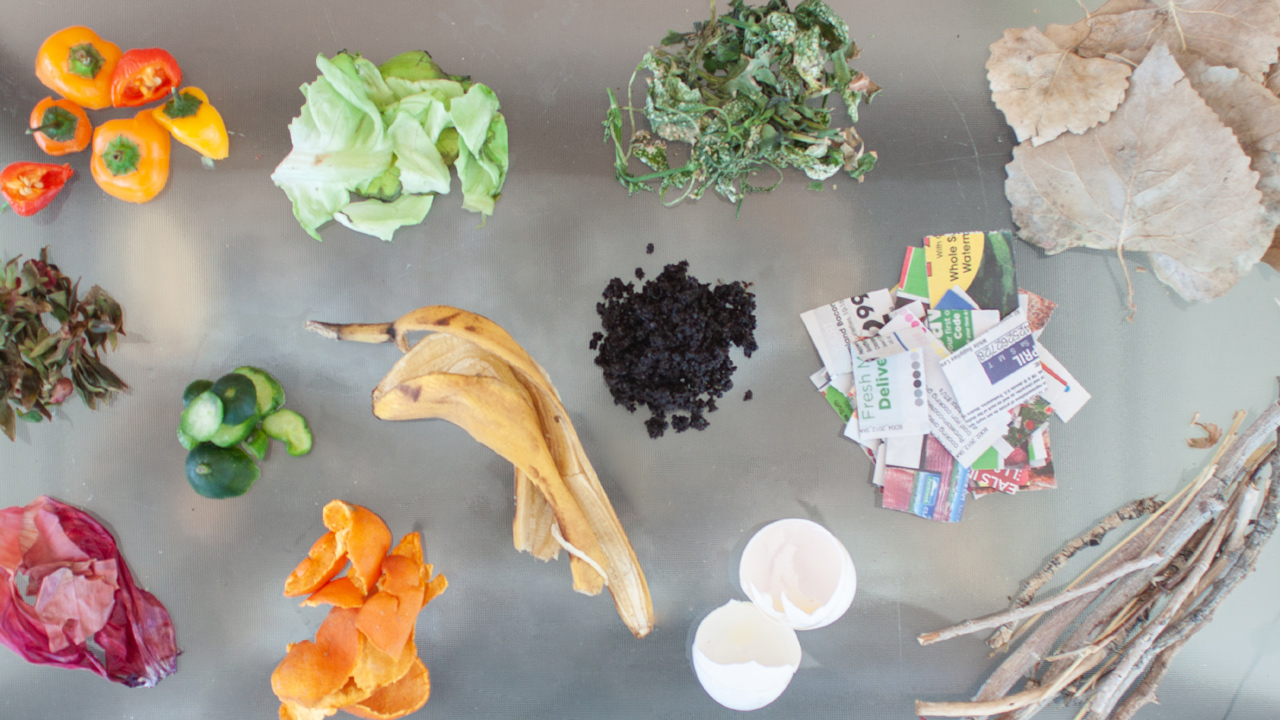
Nitrogen + Carbon
To do their job of converting scraps into valuable compost, the microbes need two important ingredients to work with – nitrogen and carbon. Nitrogen-rich inputs – often called “greens” – are usually high in moisture and include things like vegetable food scraps, grass clippings, plant trimmings, and coffee grounds. Carbon-rich inputs – often called “browns” – usually have less moisture and tend to be woodier in nature. Brown components could include things like dead leaves, twigs, sawdust, shredded newspaper, and straw.
The relative amounts of green to brown material you add to your compost pile is important. Ideally, there should be 2-3 times more of the brown or carbon-rich material than there is green or nitrogen-rich material in the pile. And it’s a good idea to layer the brown and green materials in the bin with the green material concentrated toward the center and the brown material completely covering it. This layering method hides the green material which helps keep odors from forming and discourages critters from investigating.
Materials to Avoid
But keep in mind, there are some items you just don’t want to compost at home. Materials to avoid include animal products such as meat, bones, fatty products, and dairy. These materials attract rodents and other creatures to the bin and create foul odors your neighbors won’t appreciate. To compost these types of materials, consider joining a composting club like the one offered by Hillside Solutions. As a member, you can drop off your compostable materials – including animal products above – at designated locations. Then a couple times a year, you’ll get back either one free bag of compost or a percentage off a larger order.
But no matter what, avoid composting diseased plant materials that can spread pathogens to your garden.
Water
Like most living things, microbes need water to function properly. Some of the moisture needed comes from the green material you add to the bin, and some comes from precipitation. When the weather is dry, you might need to add supplemental moisture too. For best results, the pile should be damp like a rung-out sponge, so check it from time to time. If it needs moisture, use a garden hose to sprinkle water on top or insert the hose into the pile at a few different spots.
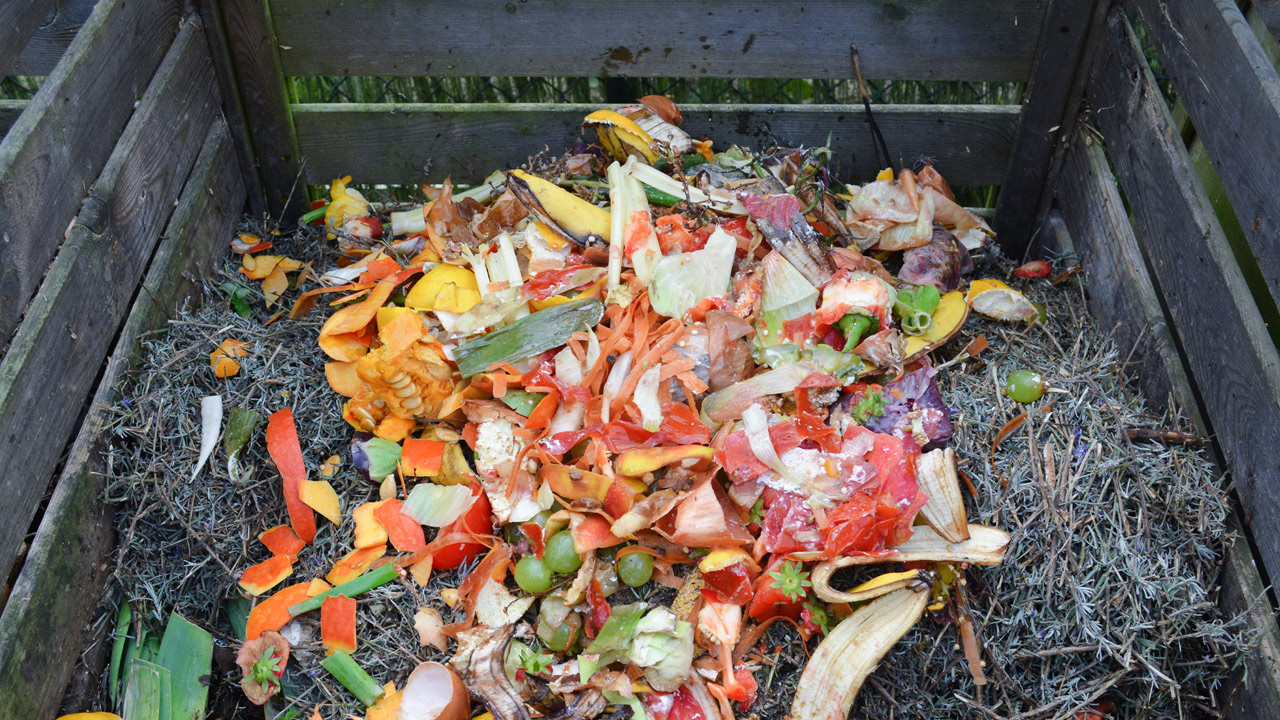
“Cold” Composting
The method described above is often called “hot” composting because it creates the ideal situation for microbes to do their decomposition work – which generates heat in the process. But if you aren’t worried about how long it takes to create the compost – or about killing plant pathogens either – you might try “cold” composting instead. In cold composting, you simply pile whatever organic materials you wish to use in a porous bin or even just on the ground. Layering isn’t a concern, and you can turn it or add water if you want to. It’s a kind of “lazy gardener” approach to composting. This method gets the job done too – it just does it at a much slower pace.
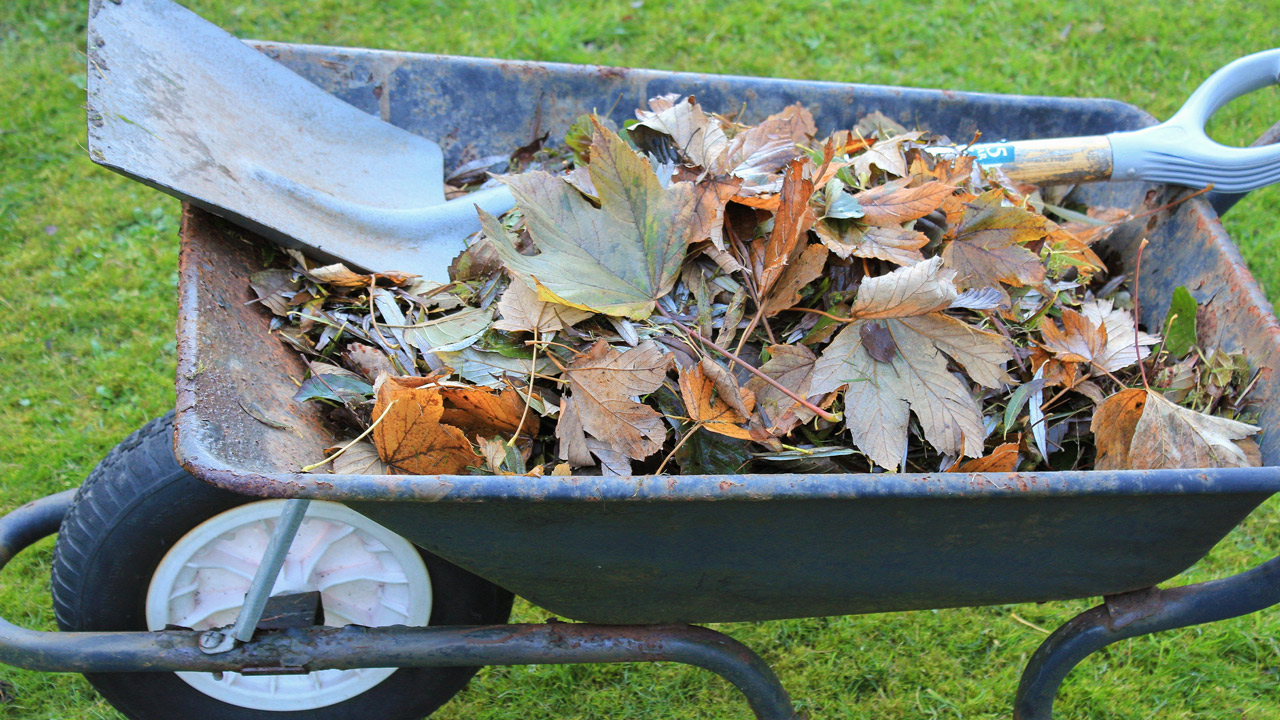
Recycle Your Scraps + Help the Planet
We hope you’ll start your own supply of valuable, earth-friendly compost – it’s a great way to reduce the amount of wasted resources your household produces and to do your part to keep damaging greenhouse gases from entering the atmosphere. And as a bonus, you end up with a supply of rich, nutritious compost to feed your garden. If you have questions, just ask. We’re here to help in any way we can.

